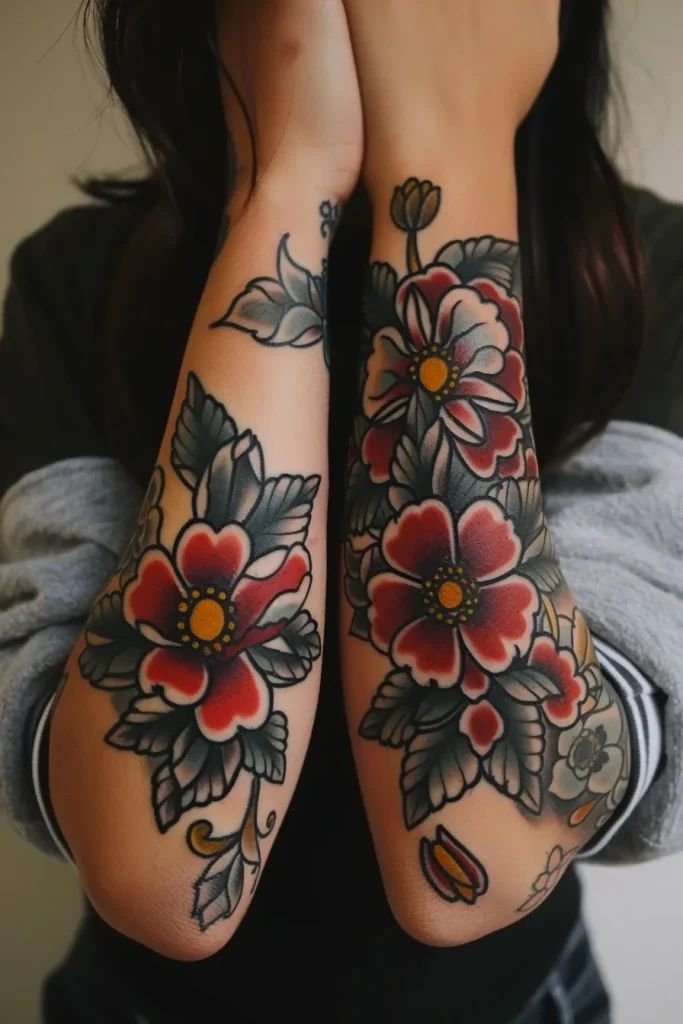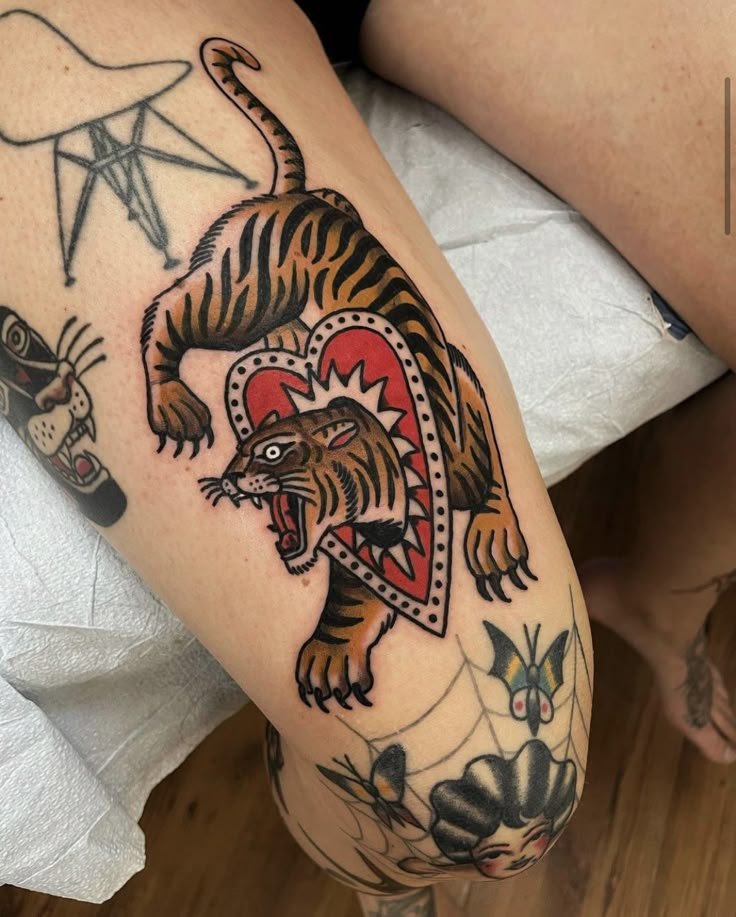Back to the Ink: The Unexpected Comeback of Traditional Tattoos
Originating in Ancient Cultures
Traditional tattoos can be traced back to ancient cultures. They were more than mere body art; they signified identity, status, and heritage. Think about the Polynesian tatau. Each intricate design tells a story, weaving personal history and cultural significance.
Development of Iconic Styles
As time passed, these ancient practices evolved, leading to the unique styles we see today. Japanese tattoos, for example, are known for their colorful, detailed imagery that often symbolizes bravery and honor. Other cultures, like Native Americans, utilized tattooing to mark important life events.
Symbolism in Traditional Designs
The beauty of traditional tattoo designs lies in their symbolism. Many bear spiritual meanings that transcend mere decoration. A traditional snake tattoo can symbolize transformation, while a turtle might represent endurance and stability. Understanding these meanings is vital. It allows one to appreciate the art form on a deeper level.
Personal Stories and Cultural Significance
Over 90% of tattooed individuals say their tattoos have personal stories.
Research shows a 30% increase in traditional tattoo styles since 2015.
As tattoos have gained popularity, more individuals are embracing traditional designs. They are not just aesthetic choices; many people carry their family history, personal experiences, and sometimes, spiritual or cultural ties on their skin.
"Tattoos are eternal. They tell stories that linger through generations." - Kat Von D
This statement highlights the binding connection between tattoos and personal narratives. Traditional tattoos often reflect a broader cultural identity. They are a testament to where one comes from, curated through generations.
Understanding Cultural Context
Each culture has its quirks and unique styles, making the tattoo world incredibly diverse. For instance, Maori tattoos known as ta moko are significant in their spiritual essence.
Art enthusiasts and tattoo lovers alike must delve into the cultural contexts of various designs. Why? Because appreciating the culture enriches the understanding of each tattoo.
Roots of traditional tattooing run deep, anchoring themselves in history, culture, and personal stories. Each tattoo holds significance, embodying the rich tapestry of human experience. The journey into traditional tattooing is both an exploration and a celebration of the art.
flashyourtat.com
Modern Interpretations of Classic Designs
Traditional Meets Modern
Modern tattoo artists are taking classic designs and giving them a fresh twist. This trend is not merely about replicating old styles; it's about blending traditional elements with contemporary techniques. Each tattoo tells a story. But how do these stories evolve over time?
Adapting for Today
Today's clients want something personal. They are often looking for unique interpretations of classic themes. It's not just about ink on skin anymore; it's about artistry and connection. Traditional designs don't have to look like they did a century ago. Artists adapt these styles to fit modern aesthetics. This includes using brighter colors, finer lines, or even incorporating geometric shapes.
Pop Culture's Influence
Many pop culture figures openly embrace traditional tattoos.
This acceptance leads to a wider appreciation and demand for these classic designs.
When a celebrity chooses to sport old-school tattoos, it sparks curiosity and acceptance. People start to see traditional tattoos as not just relics of the past but as part of contemporary culture.
"Every tattoo offers a glimpse into the soul of the wearer."
Cultural Significance and Revival
Cultural Appropriation vs. Appreciation
The line between cultural appropriation and appreciation is often blurred, especially in the world of tattoos. Cultural appropriation occurs when elements from one culture are taken by another, typically without understanding or respecting their significance. This can lead to the commodification of sacred traditions. In contrast, cultural appreciation involves recognizing and honoring the heritage behind the art. It fosters mutual respect and understanding.
Traditions Being Preserved Through Tattooing
Tattooing is more than just a trend; it is a form of preserving traditions. Many diverse communities are embracing traditional tattoo practices. These practices help maintain their cultural identity, especially in a modern world that often seeks to dilute it. For many, these tattoos symbolize connections to their ancestors, telling stories of battles, love, and heritage.
Traditional tattoos often incorporate significant symbols.
Designs can reflect personal journeys or communal histories.
In fact, studies show that 70% of tattoo enthusiasts appreciate the cultural significance behind their body art. This indicates a deepening understanding of the origins and meanings of tattoos. Newcomers are becoming more aware of these roots, seeking authenticity in their choices. The revival of these traditional practices does more than just beautify the body; it serves as a bridge connecting generations.
Community and Belonging Expressed Through Body Art
Tattoos often act as a form of community bonding. They express a sense of belonging to a shared heritage. Whether it's through tribal patterns or traditional styles, they create a visual representation of unity. The appeal of body art in forming communities is evident at expos and conventions. There has been a 25% increase in interest in cultural tattoos at these events. This is a clear indication that people are eager to learn and engage with diverse traditions.
"Tattoos are a bridge between the past and the present; they connect us to our ancestors." - Doreen Garner
The revival of traditional tattooing fosters community and encourages cultural appreciation. It also sparks important conversations about authenticity and the potential pitfalls of appropriation. Engaging in these discussions helps everyone involved grow in understanding and respect.
As such, tattooing isn’t just about ink; it’s about the stories, connections, and identities they represent.
Personal Stories: The Heart of Tattoo Art
Tattoos are more than just art on skin. They are portals into personal stories. Each design often carries a narrative. Every inked line has emotion behind it. The journey to get a tattoo can be transformative. For many, it symbolizes a significant life event or a cherished memory.
Clients Share Their Personal Stories
When someone gets a tattoo, it’s often a deeply personal decision. Clients have stories. These stories are moments in time. They may commemorate a loved one, mark a milestone, or serve as a reminder of strength. For instance, one client shared,
"My tattoo tells my story; it's a testament to my journey."
This reveals just how significant these designs can be.
Tattoos as Narrative Devices
Tattoos act as powerful narrative devices. They communicate emotions that words sometimes can't express. A simple design can carry layers of meaning. The art represents triumph over adversity for one person, and a tribute to love lost for another. This is the beauty of tattoo art—it tells a story without uttering a single word.
Symbolism: Many tattoos incorporate symbols that hold personal meaning.
Design Choices: Color, size, and placement often reflect the significance behind the tattoo.
Sharing Experiences: Clients frequently find comfort in sharing their stories with their tattoo artists.
The Emotional Weight Behind Each Piece
Every tattoo carries emotional weight. As noted, many people choose designs that resonate with personal milestones. In fact, 77% of tattoo bearers report selecting designs linked to significant life events. They may be reminders of strength during tough times or symbols of love and connection.
Moreover, tattoo artists serve as more than just craftsmen. They often act as therapists during the process. The act of getting inked can be cathartic. Clients discuss their lives, fears, and joys. This dynamic creates a bond—a collaborative storytelling experience.
A recent survey highlights that 85% of clients view their tattoos as part of their identities. They hold deep personal significance. They become intertwined with how individuals perceive themselves or wish to be perceived by others.
In essence, tattoos are deeply personal artifacts that encapsulate life's narrative. They resonate with emotions, memories, and stories that are unique to each individual.
The Future of Traditional Tattoos
As the art of tattooing evolves, the future of traditional tattoos stands at a thrilling crossroads. There are numerous factors influencing this transformation. From emerging global trends to the integration of technology and sustainable practices, it's clear that the world of tattoos is changing.
Emerging Global Trends
In recent years, there has been a noticeable shift in how societies perceive tattoos. Acceptance is growing. Tattoos are no longer limited to rebellious youth or fringe subcultures. They have entered mainstream culture.
Individuals of all ages are embracing body art.
New designs reflect personal stories and global influences.
Tattoo conventions are flourishing worldwide, showcasing diverse styles.
This influx of interest indicates that the global tattoo market is projected to grow to $3 billion by 2025.
Potential Fusion of Technology and Art
Technology is playing an integral role in modern tattooing. Digital design tools are becoming commonplace. From planning to execution, innovative applications are enhancing traditional methods.
Imagine designing a tattoo on a tablet, adjusting every line and detail with precision. Artists can refine their creations before they touch the skin. This results in stunning artwork that resonates deeply.
Recent trends indicate an impressive 20% increase in the use of technology for tattoo design. The consensus is simple: technology and art can coexist, enriching the tattooing experience.
Sustainability in Tattoo Practices
With growing awareness about environmental issues, sustainability is becoming a key focus in tattooing. Many artists are now prioritizing eco-friendly practices. This includes:
Using sustainable ink made from natural ingredients.
Implementing waste reduction techniques.
Promoting aftercare products that are environmentally friendly.
This initiative is more than a trend; it reflects a shift in values among the tattoo community.
"The future of tattooing lies in respecting tradition while embracing modern advancements." - Scott Campbell
As traditional tattoos continue to evolve, the blend of modern technology with age-old practices ignites fresh discussions about the future of body art. It pushes boundaries, reshapes perceptions, and introduces new possibilities. The journey of traditional tattoos is just beginning, and the potential is vast. In embracing these changes, both artists and enthusiasts will find a vibrant landscape filled with innovation and tradition. The future looks bright for this enduring form of expression.




